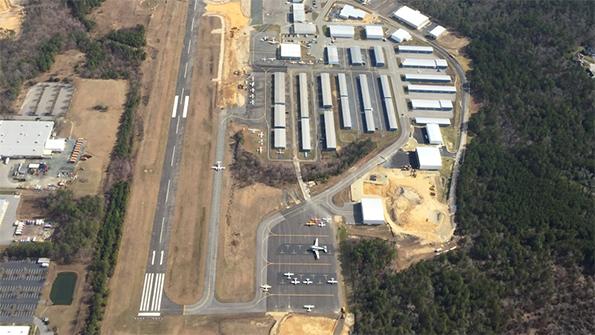
As shell-shocked airlines cut back on service, eliminating flights, personnel and destinations, as inquiries to charter operators and demands on flight departments steadily increase, and as alternate aviators—those proponents of electric, hybrid, multirotor, urban and autonomous flight—consider where to alight, the collective focus turns again and again to that underused but plentiful infrastructure asset: the general aviation airport.
Easily overlooked in the high-pressure, just-in-time machinery of massive road, air and marine transport, those municipal and county airports are at the ready to accommodate virtually all comers. And first-timers are in for some welcome surprises.
First off, getting there is likely to be more convenient than accessing a major airline-served facility, since that “sleepy little airport” is probably closer, with light road traffic—and you can park your four-wheeler within steps of the terminal. Second, once inside the fixed-base operation (FBO), there are no passenger queues, no security screens, no baggage drop-offs, since you or your pilot carry your overnighter to the aircraft.
And once you and your colleagues are ready to depart, you do just that, since you set the schedule. Oh, and there are no connecting flights involved: The one aircraft takes you from A to B and on to C, D and E, if you like. While the FBO and terminal design may differ at the destinations, the experience there is pretty much the same. And that little airport is probably closest to the person or place being visited.
The ease of travel anchored by general aviation airports is appealing, but is catering to private pilots and corporate aircraft passengers good for the public weal? Advocates contend that such facilities are indispensable and point to data supporting that position.
Why are they nearby? Because they’re everywhere. According to the U.S. Transportation Department, there are some 5,100 public use airports in the U.S. accessed by general aviation versus roughly 500 (possibly now even fewer due to cutbacks) offering some airline service, however modest. For rural areas, the general aviation airport may be the only air transport access within reach, it is home to agplanes that keep us fed, and it is a key resource in times of medical or other emergencies.
Such airports also provide jobs—lots of them. A 2018 study by PwC pegged general aviation employment at 1.1 million jobs that year, all contributing to the nearly $250 billion in general aviation economic activity. And they serve as a home base for the majority of the country’s 211,000 active piston and turbine aircraft.
For perspective, it can be instructive to look at a single facility. St. Mary’s County Regional Airport (FAA identifier: 2W6) in Leonardtown, Maryland, is arguably a facility for now and what’s coming. Aside from being home to 200 aircraft—including two medevac helicopters—it was among a half-dozen airports selected by the FAA to support the safe integration of drones into the National Airspace System, and it helped lead to the development of the Part 107 regulations for commercial use of small, unmanned aircraft.
Located on a Chesapeake Bay peninsula 60 mi. due south of Washington and celebrating its 50th year of service, it is the only public use airport in a tri-county area—although NAS Patuxent River, home to the U.S. Navy Air Systems Command and test pilot school, is nearby. The airport has an FBO, flight school and charter operator.
According to a study conducted for Maryland’s Transportation Department in 2017, the airport recorded 33,588 aircraft operations that year, supported 499 jobs, accounted for $52 million in business revenue and local purchases and delivered $6.2 million in state and local taxes.
The airport has become a high-tech center, thanks to an ongoing influx of tenant companies supporting “Pax River” activities and the University of Maryland establishing an unmanned aircraft systems (UAS) test site and education center there. The university is also adding a building focused on autonomous-systems research.
Although the county-owned airport turned a profit last year, that was an exception. Still, the commissioners clearly appreciate its economic draw. Accordingly, a construction project is underway to lengthen its single runway to 5,350 ft. from 4,150 ft. to accommodate larger business jets. In addition, Airport Manager Allison Swint says a cafe is expected to open in the terminal building in the near future, and plans call for the construction of additional box hangars.
Meanwhile, James Alexander, chairman of the airport’s advisory board, notes that although absent scheduled service, 2WS “is definitely an asset, and the county sees it that way.” And alternative aviators can expect a welcome. You see, the retired U.S. Air Force officer helps lead UAS research there, and whenever he can, he flies airplanes and drones out of that same not so sleepy, not so little airport.





